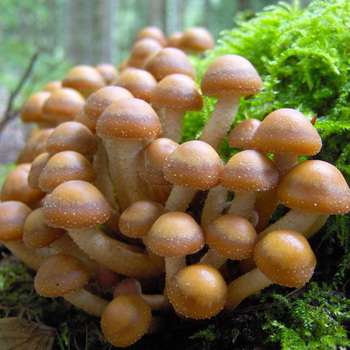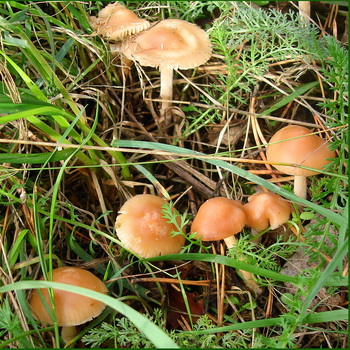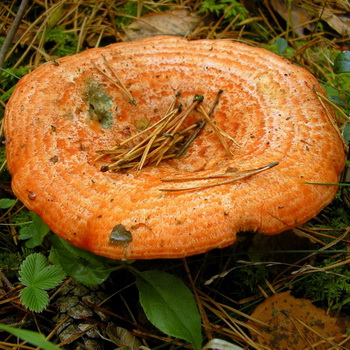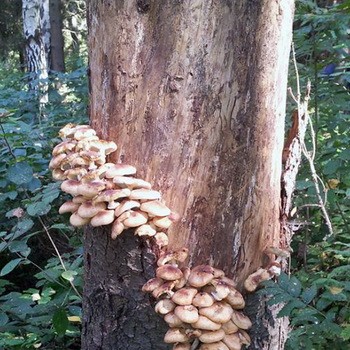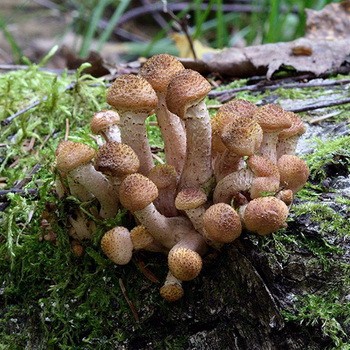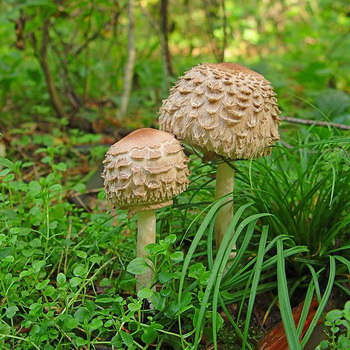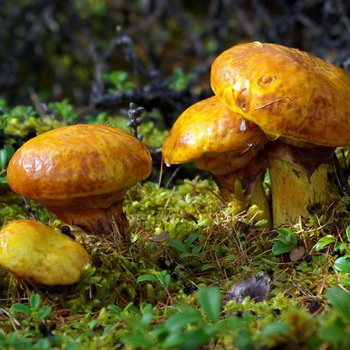Edible spruce mushrooms: photo and description
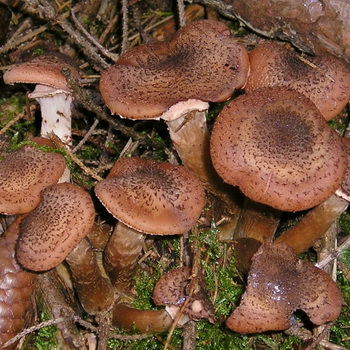
Content
Why honey agarics become dark?
The most common and well-known, many call the autumn mushroom. Often synonyms are applied to it: spruce, dark, hard spruce. Dark honey agaric is able to spread over large areas of the forest. They grow not only in forests with deciduous trees, but also in spruce forests, pine forests. Often a dark spruce mushroom is found next to shrubby plants on the forest edges. These fruiting bodies grow throughout Russia, even in the Northern Hemisphere and in the region of the subtropics.
Spruce mushrooms are considered edible and the most recognizable of other species, due to the dark color of the hats. These mushrooms, like autumn mushrooms, grow on old and dying trees, on the trunks and roots of fallen trees, on the rotten stumps of pines and firs.
The spruce mushroom is similar to other autumn representatives, however, it differs slightly in color. He has a thin hat of a dark, almost brown color. The cylindrical leg of the fungus is covered by a white-brown shade ring. The collection season for these honey mushrooms begins in mid-August and lasts until October, and sometimes, in good warm weather, until mid-November. Although the value of this edible mushroom is low, since it has a bitter taste, its nutritional properties are not inferior to autumn species of honey agarics.
The stumps and trees on which the honey agarics grow dark are penetrated by a mycelium, glowing in the dark. If you are not afraid and come to the forest, you can see those luminous places where honey mushrooms grow.
All species of honey mushrooms are parasitic fungi that settle even on living trees, killing them in 3-4 years. These fruiting bodies grow not only in deciduous and mixed forests. They can be found on coniferous trees: pines and firs. That is why the shade of mushrooms changes, and we understand why honey agarics become dark. The mycelium creeps under the bark of a tree, killing the cambium, located between the bark and the wood of the tree. The bitterness of pine species passes into fruiting bodies, and dark wood gives its spruce color its color.
What autumn dark spruce mushrooms look like and their mycelium
We offer you to familiarize yourself with the description and photos of spruce mushrooms.
Latin name: Armillaria solidipes;
Gender: mushroom mushrooms autumn;
Kingdom: mushrooms;
Family: physiacrylate;
Grade: agaric;
Synonyms: honey agaric dark, spruce, autumn spruce, ground.
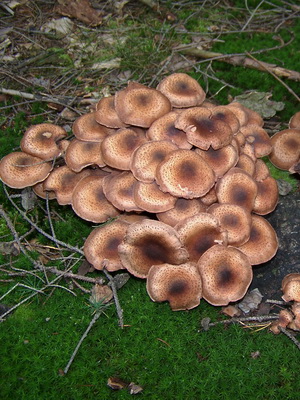
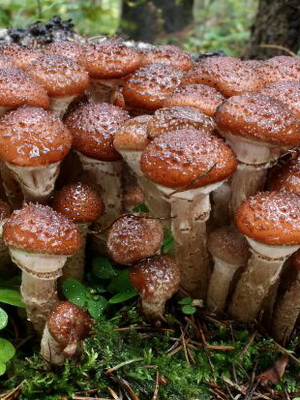
Hat: diameter from 4 to 10 cm, resembles a hemispherical shape, convex, brown in color, without a yellow tint. On a hat there are large scales of dark brown color. The scales are clearly visible on the light background of the hat. With the growth of the mushroom, the convex hat becomes even.
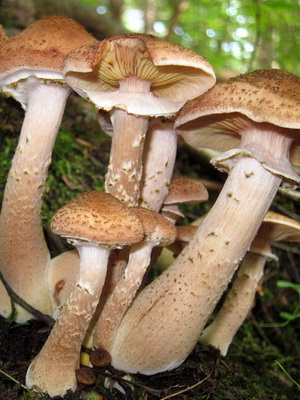
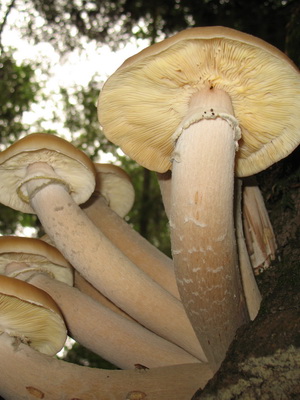
Records: white, with age become spotty with a reddish tint.
Pulp: loose, with a white or slightly yellowish tint, does not have a smell.
Leg: height from 5 to 10 cm, thickness 1-2.5 cm, cylindrical in shape, at the base with a slight thickening. The leg feels dry to the touch, has a brown tint from the bottom. The ring around the legs is well defined, pronounced white. On the lower side of the ring, brown flakes are clearly visible along the edge of the film.
Similarities: dark spruce hemp is considered to be the edible and most recognizable species of honey agarics. Strongly reminiscent of an edible autumn honey agaric growing at the same time.
Spread: grows throughout Russia, except the Far North. The collection season begins in July and ends in mid-October. Depending on the climatic conditions of a particular territory, it can grow in late October and even in early November. Grows in small families, prefers conifers and fallen trees, as well as stumps. Sometimes found on deciduous trees, as well as near shrubs.
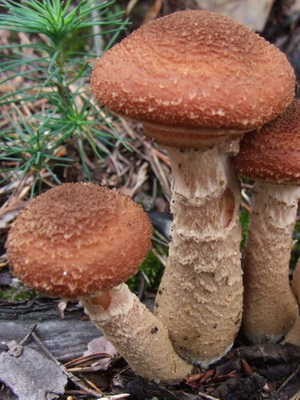
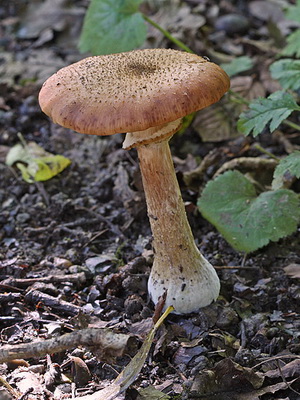
A photo visualizing edible spruce mushrooms helps mushroom pickers to better see the difference between a fungus and a false species.
Autumn spruce worm is sometimes called ground, as it often grows in mixed forests with a predominance of decaying wood. This species settles in colonies near spruce or pine rotten stumps, as well as on dead tree trunks. As already noted, its nutritional value is not inferior to autumn mushrooms, although it has a bitter taste. To get rid of this aftertaste, dark spruce honey agarics are pre-cooked: boiled in salted water 2 times for 20 minutes, each time using new water.
We suggest you look at a few more photos of dark edible mushrooms that will help mushroom pickers examine them from different angles:
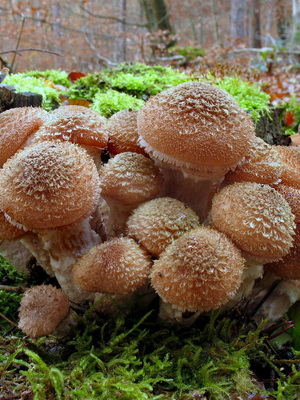
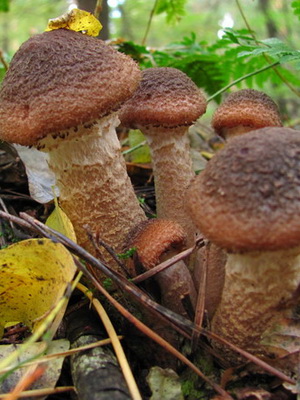
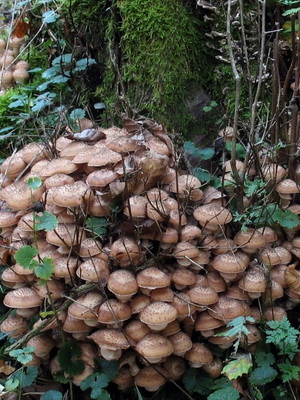
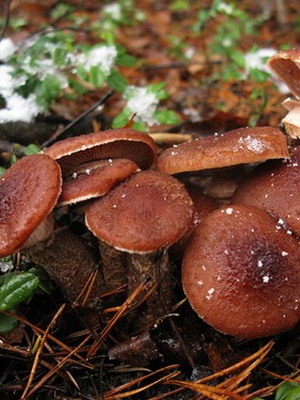
It must be said that the swollen false foil is very similar to the dark one. It grows in the same forests and prefers the same species of trees. In this case, you should arm yourself with detailed information that will help to recognize the edible species mentioned among the false. Thus, knowing what edible spruce mushrooms look like, you will protect your health and the health of your loved ones.
The mycelium of the dark agaric forms under the bark of the tree black mycelial cords, which are clearly visible even with the naked eye. The spores of these fruiting bodies are elliptical, smooth and colorless. The most significant is the fact that dark spruce mushrooms grow only in the lower part of dead trees, sometimes found on living trunks. Stumps choose mainly coniferous species, most often pine. Check out another photo of spruce mushrooms, which clearly illustrates their appearance:
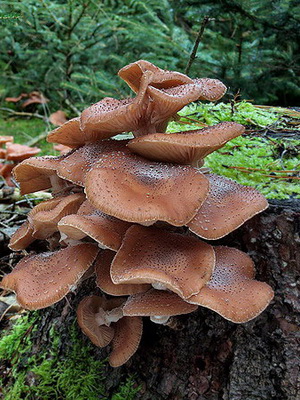
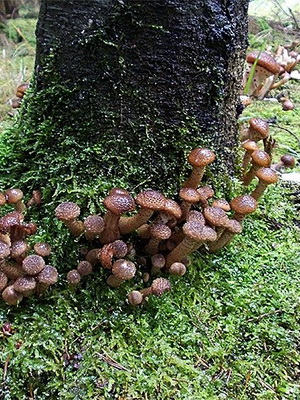
It is worth saying that dark agaric in coniferous forests can capture a large territory, especially if there are a lot of raw fallen trees. For example, in the coniferous forests of Switzerland, a mushroom mushroom was found in a dark mushroom of a dark area of about 35 hectares. Although these fruiting bodies grow in colonies from August to November, large yields of dark honey mushrooms are rare - once every 3-4 years.
How to distinguish spruce mushrooms from mushrooms similar to grebes (with photo)
Experienced mushroom pickers, knowing what spruce mushrooms look like, will never confuse them with a false red-brick honeycomb. This inedible mushroom grows on the same stumps, but differs in later fruiting and has a bitter flesh. If you have recently become a fan of "silent hunting", try several times to go to the forest with mushroom pickers who have experience. Thus, you can learn how to distinguish spruce mushrooms not only from the photo:
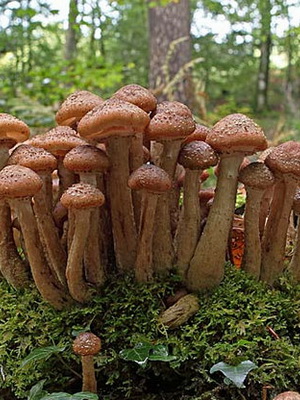
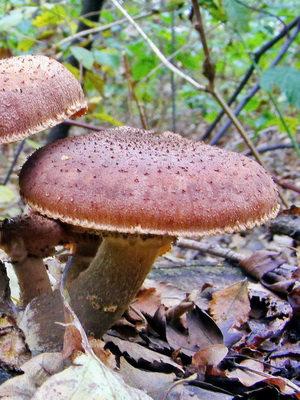
Sometimes mushroom pickers note that in the forest you can find spruce mushrooms, similar to a grebe. However, here we want to say that there are significant differences between these mushrooms.For example, the main difference is the presence on edible mushrooms of a “skirt” from the film that frames the leg. Poison mushrooms do not have such a skirt ring. If you met a grebe, then note that she also has such a ring. However, the unpleasant smell of this mushroom and the appearance of a hat without scales specifically indicate that it is a poisonous mushroom. You can compare photos of edible honey agarics and a grebe similar to them, in order to know the differences:
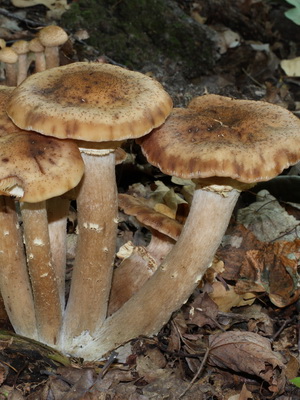
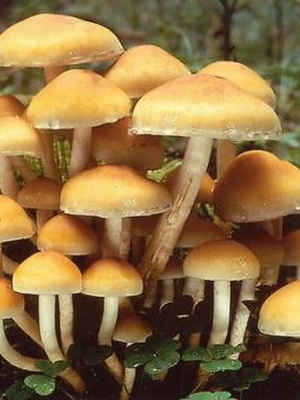
In addition, novice mushroom pickers should alert the cup-Volvo. It is located in the lower part of the leg right on the ground. When a young mushroom appears, this Volvo cup breaks into 3-4 blades and it seems that the leg of the grebe is inserted into it. The color of a Volvo ranges from yellowish to green, and also has an unpleasant odor.
I would like to note that dark spruce mushrooms, like autumn ones, are considered one of the most popular. They grow in groups, so from one stump or tree trunk you can collect more than one basket. Although honey mushrooms are called a low-calorie product, they contain many useful trace elements: potassium, iron, zinc, phosphorus, as well as vitamins C, PP, B and E, proteins, natural sugars and amino acids.
From mushrooms of a dark color, you can cook a wide variety of dishes. They can be marinated, fried, stewed, salted and fermented. However, remember that previously these fruiting bodies are necessarily subjected to boiling in order to remove bitterness.
